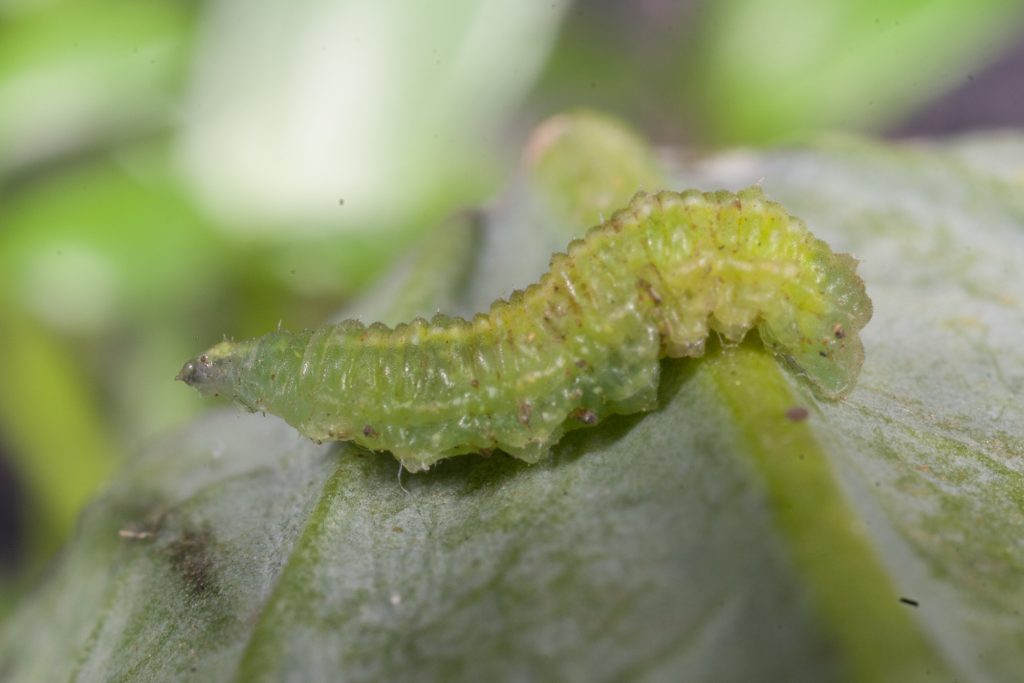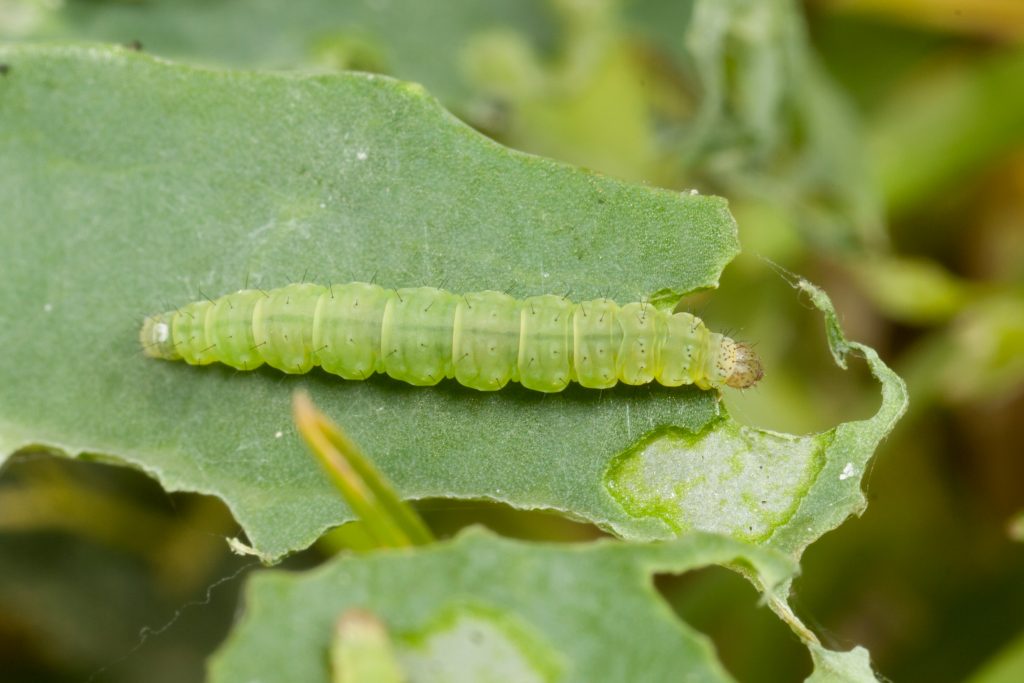With aphid activity expected to rise with the onset of warm spring weather, it’s a promising sign that agronomists are already noticing hoverflies hovering about flowering crops.
If you aren’t overly familiar with this family of beneficials predators, here are our top 5 things to know about hoverflies:
1. The adults can be mistaken for bees and wasps
At first glance adult hoverflies can look a little like bees or wasps. They are 4-10 mm long, winged, and have a dark-coloured body with black and yellow markings.
But a closer look will reveal some key differences.
One feature is body shape. Several species that occur in crops (e.g. Melangyna viridiceps and Simosyrphus grandicornis) have flattened bodies, while bees and wasps do not.
Another feature is the number of wings. Hoverflies only have one pair of visible wings, while bees and wasps have two pairs.
2. The larvae can be mistaken for pests
The larvae of hoverflies are grub-like, with no legs or visible head, and vary in colour from green to cream or brown.
Growing to 10 mm in length and often found crawling across vegetation in search of food, hoverfly larvae can be confused with small above ground pest species such as larvae of the diamondback moth, the vegetable weevil or the greybanded leaf weevil.
To tell apart these pests from hoverfly larvae, look out for the presence of a head capsule in weevils and the diamondback moth, as well as legs in the latter.

Photo by Andrew Weeks, Cesar Australia 
Photo by Andrew Weeks, Cesar Australia
3. They are voracious predators
While the adult hoverflies feed on nectar and pollen, the larvae are voracious carnivores with a taste for soft-bodied insects, particularly aphids.
They are often seen spearing prey with their hook-like mouthparts and sucking out all their nutrients, leaving behind the shrivelled-up corpses.
4. They migrate
In Europe, adult hoverflies are known travellers that undergo mass seasonal migrations. One study suggests that 1 to 4 billion hoverflies migrate over southern Britain every year!
In Australia, the ecology and behaviour of hoverflies has not been well studied and is less understood. However, a recent study in which records from the Atlas of Living Australia were analysed, strongly suggested that species of hoverflies occurring in Australia are also migratory, including two of the most common species, Melangyna viridiceps and Simosyrphus grandicornis.
5. They are pollinators
Eating pesky aphids is not the only beneficial ecological service offered by hoverflies – they are also increasingly recognised as important crop pollinators!
Acknowledgements
Thanks to the following for providing field observations: Greg Toomey (Nutrien Ag), Bruce Larcombe (Larcombe Agronomy)
Cover image: Photo by Andrew Weeks, Cesar Australia





